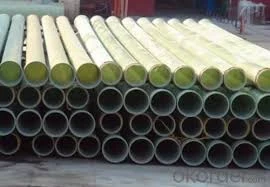
-
 Afrikaans
Afrikaans -
 Albanian
Albanian -
 Amharic
Amharic -
 Arabic
Arabic -
 Armenian
Armenian -
 Azerbaijani
Azerbaijani -
 Basque
Basque -
 Belarusian
Belarusian -
 Bengali
Bengali -
 Bosnian
Bosnian -
 Bulgarian
Bulgarian -
 Catalan
Catalan -
 Cebuano
Cebuano -
 China
China -
 China (Taiwan)
China (Taiwan) -
 Corsican
Corsican -
 Croatian
Croatian -
 Czech
Czech -
 Danish
Danish -
 Dutch
Dutch -
 English
English -
 Esperanto
Esperanto -
 Estonian
Estonian -
 Finnish
Finnish -
 French
French -
 Frisian
Frisian -
 Galician
Galician -
 Georgian
Georgian -
 German
German -
 Greek
Greek -
 Gujarati
Gujarati -
 Haitian Creole
Haitian Creole -
 hausa
hausa -
 hawaiian
hawaiian -
 Hebrew
Hebrew -
 Hindi
Hindi -
 Miao
Miao -
 Hungarian
Hungarian -
 Icelandic
Icelandic -
 igbo
igbo -
 Indonesian
Indonesian -
 irish
irish -
 Italian
Italian -
 Japanese
Japanese -
 Javanese
Javanese -
 Kannada
Kannada -
 kazakh
kazakh -
 Khmer
Khmer -
 Rwandese
Rwandese -
 Korean
Korean -
 Kurdish
Kurdish -
 Kyrgyz
Kyrgyz -
 Lao
Lao -
 Latin
Latin -
 Latvian
Latvian -
 Lithuanian
Lithuanian -
 Luxembourgish
Luxembourgish -
 Macedonian
Macedonian -
 Malgashi
Malgashi -
 Malay
Malay -
 Malayalam
Malayalam -
 Maltese
Maltese -
 Maori
Maori -
 Marathi
Marathi -
 Mongolian
Mongolian -
 Myanmar
Myanmar -
 Nepali
Nepali -
 Norwegian
Norwegian -
 Norwegian
Norwegian -
 Occitan
Occitan -
 Pashto
Pashto -
 Persian
Persian -
 Polish
Polish -
 Portuguese
Portuguese -
 Punjabi
Punjabi -
 Romanian
Romanian -
 Russian
Russian -
 Samoan
Samoan -
 Scottish Gaelic
Scottish Gaelic -
 Serbian
Serbian -
 Sesotho
Sesotho -
 Shona
Shona -
 Sindhi
Sindhi -
 Sinhala
Sinhala -
 Slovak
Slovak -
 Slovenian
Slovenian -
 Somali
Somali -
 Spanish
Spanish -
 Sundanese
Sundanese -
 Swahili
Swahili -
 Swedish
Swedish -
 Tagalog
Tagalog -
 Tajik
Tajik -
 Tamil
Tamil -
 Tatar
Tatar -
 Telugu
Telugu -
 Thai
Thai -
 Turkish
Turkish -
 Turkmen
Turkmen -
 Ukrainian
Ukrainian -
 Urdu
Urdu -
 Uighur
Uighur -
 Uzbek
Uzbek -
 Vietnamese
Vietnamese -
 Welsh
Welsh -
 Bantu
Bantu -
 Yiddish
Yiddish -
 Yoruba
Yoruba -
 Zulu
Zulu
Fiberglass Pipe Fittings Overview and Benefits for Various Applications and Industries
The Versatility of Fiberglass Pipe Fittings in Modern Infrastructure
In the ever-evolving world of construction and infrastructure, the choice of materials plays a critical role in the efficiency and durability of systems. One material that has gained significant traction in recent years is fiberglass. Fiberglass pipe fittings, in particular, stand out due to their unique combination of strength, lightweight nature, and resistance to a variety of environmental challenges. This article explores the benefits, applications, and future prospects of fiberglass pipe fittings.
Understanding Fiberglass Pipe Fittings
Fiberglass pipe fittings are components manufactured from glass-reinforced plastic (GRP), commonly known as fiberglass. This composite material consists of a polymer matrix reinforced with fine glass fibers, resulting in a product that is not only robust but also lightweight. These fittings come in various shapes and sizes to accommodate different piping needs, including elbows, tees, reducers, and flanges. Their versatility makes them suitable for a wide range of applications, from industrial settings to residential plumbing.
Advantages of Fiberglass Pipe Fittings
1. Corrosion Resistance One of the primary advantages of fiberglass fittings is their resistance to corrosion. Unlike metals, which can rust and degrade when exposed to moisture and chemicals, fiberglass can withstand harsh conditions and is impervious to many corrosive substances. This quality greatly extends the lifespan of the fittings in environments such as chemical processing plants or wastewater management facilities.
2. Lightweight and Easy to Handle Fiberglass fittings are significantly lighter than their metal counterparts. This lightweight characteristic not only simplifies transportation and installation but also reduces labor costs. Installation teams can work more efficiently, which can lead to shorter project timelines.
3. Insulation Properties Fiberglass has excellent thermal insulation properties, making it suitable for applications involving hot or cold fluids. By minimizing heat loss or gain, these fittings contribute to energy efficiency, which is an essential consideration in today’s environmentally conscious world.
4. Cost-Effectiveness While the initial cost of fiberglass fittings may be higher than some traditional materials, their long-term benefits often result in savings. The durability of fiberglass reduces the need for frequent replacements, and enhanced energy efficiency translates to lower operational costs.
5. Compatibility with Various Fluids Fiberglass fittings are suitable for a wide variety of fluids, including water, chemicals, and gases. This adaptability makes them a preferred choice in diverse industries, including oil and gas, water treatment, and manufacturing.
fiberglass pipe fittings

Applications Across Industries
Fiberglass pipe fittings are increasingly utilized in numerous sectors due to their unique properties
- Water and Wastewater Management In municipal water treatment plants, fiberglass fittings are used extensively to ensure a reliable flow of water while resisting the corrosive effects of chemicals used in treatment processes.
- Chemical Processing Their corrosion-resistant nature makes fiberglass fittings ideal for transporting aggressive chemicals, ensuring safety and integrity in industrial applications.
- Oil and Gas Industry The lightweight and durable characteristics of fiberglass fittings facilitate efficient transport and installation of pipelines, crucial for extraction and transportation processes.
- Construction and Civil Engineering Fiberglass fittings are also utilized in building and construction for plumbing applications, providing a solution that meets the demands of modern infrastructure development.
The Future of Fiberglass Pipe Fittings
As industries move towards more sustainable practices, the demand for fiberglass pipe fittings is likely to increase. Innovations in manufacturing processes and enhancements in material composites can lead to even more advanced products that offer superior performance and environmental benefits. Furthermore, regulatory trends favoring eco-friendly materials only bolster the prospects for fiberglass.
In conclusion, fiberglass pipe fittings represent a significant advancement in piping technology. Their unique blend of durability, corrosion resistance, and cost-effectiveness ensures that they will continue to play a vital role in modern infrastructure. As industries seek to improve their sustainability and efficiency, fiberglass fittings will undoubtedly remain at the forefront of piping solutions, paving the way for a more resilient future.









